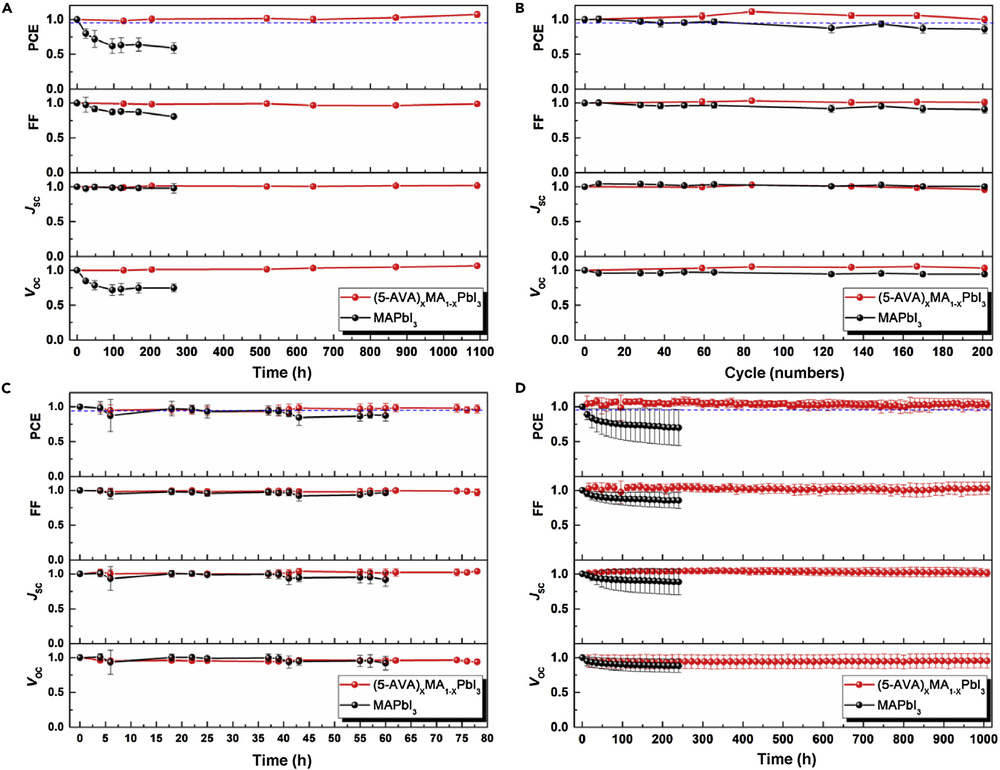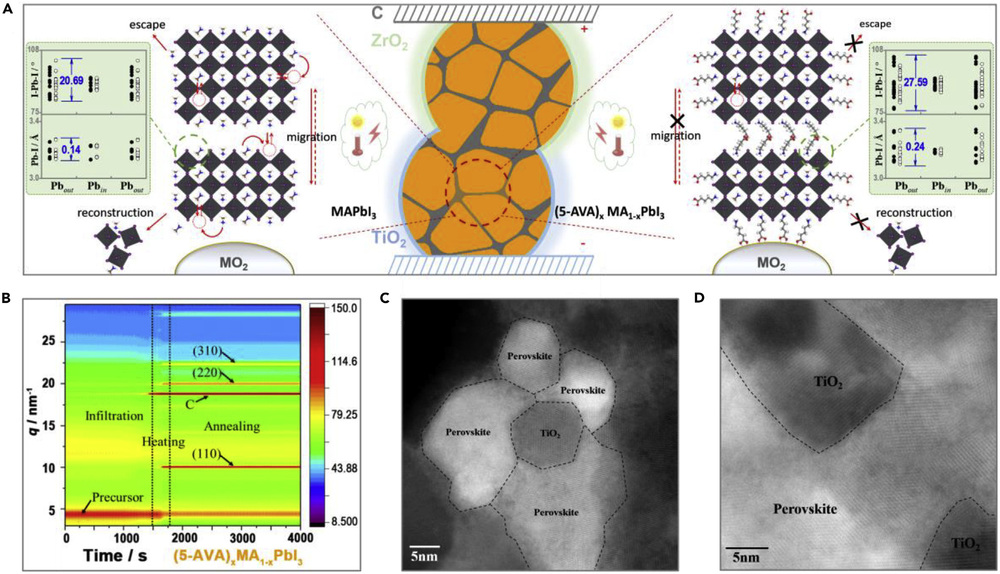The stability ofperovskite solar cells (PSCs) has been considered as the largest obstacle totheir commercialization. Herein, we observed that the main failure mechanismfor MAPbI3 perovskite is the escapeof methylammonium (MA) iodide at the grain boundaries in an open space or thereconstruction of crystal in a confined small space, as well as theirreversible long-distance ionic migration under the multiple actions of light,heat, and electrical bias. Strengthened with bifunctional organic molecular of5-ammoniumvaleric acid (5-AVA) iodide at the grain boundaries, the MAPbI3 crystal was localized in the nanoscale, andthus, the decomposition or reconstruction was inhibited and the ionic migrationbecame reversible. As a result, we propose a reliable approach to make PSCsmeet stability standards of IEC61215:2016 qualification tests. A printable PSCfilled with (5-AVA)XMA1-XPbI3 has been working for more than 9,000 h at a maximum powerpoint of 55℃±5℃ without obvious decay.
http://www.sciencedirect.com/science/article/pii/S2542435120304463

Figure1. Statistical Stability Results with Standard Deviations of IEC61215:2016 andMPPT Tests for Printable MA Containing PSCs with and without 5-AVAI
(A–D) Performance evolutions of devices under(A) the damp heat test (85℃/85%RH,1100 h), (B) thermal cycling test (-40-85℃, 200 cycles), (C) ultraviolet preconditioningtest (60℃,50 kWh m-2), and (D) MPPT light soaking test (55℃±5℃, 1,000 h). The dashed lines correspond to 95%of the initial power conversion efficiency(PCE). The error bars represent the standard deviation.

Figure2. Proposed Mechanisms for Stabilizing MA Containing Printable PSCs
(A) Schematicsfor structures of MAPbI3 and (5-AVA)XMA1-XPbI3in triple-mesoscopic layers and the process of materials decomposition andionic migration under multiple actions of light, heat, and electronic bias. Thegreen inserts show the magnitudes of Pb–I bond lengths and I–Pb–I bond angles in MA+-terminatedslabs (left) and 5-AVA+-terminated slabs (right), respectively. Foreach case, we calculated two slabs, represented by open and filled scatters. Pbout represents the Pb atoms in proximityto the slab surface, Pbin represents the Pb atoms inside the slabs.The distortion of the perovskite layer in proximity to the slab surface, whichis caused by the interaction between the perovskite layer and 5-AVA/MAmolecules, can be reflected by the changes in Pb–Ibond lengths and I–Pb–Ibond angles. The larger variation range for both Pb-I bond lengths and I–Pb–Ibond angles in the 5-AVA+-terminated slabs indicates the strongerinteraction/bonding between 5-AVA and the perovskite layer.
(B) In-situ GIWAXS tracking of (5-AVA)XMA1-XPbI3crystallization process in the mesoscopic structure.
(Cand D) Cross-sectional STEM images of the (5-AVA)XMA1-XPbI3in mesoscopic layers with (C) nanosized domains and (D) continuous relation.The scale bar is 5 nm.